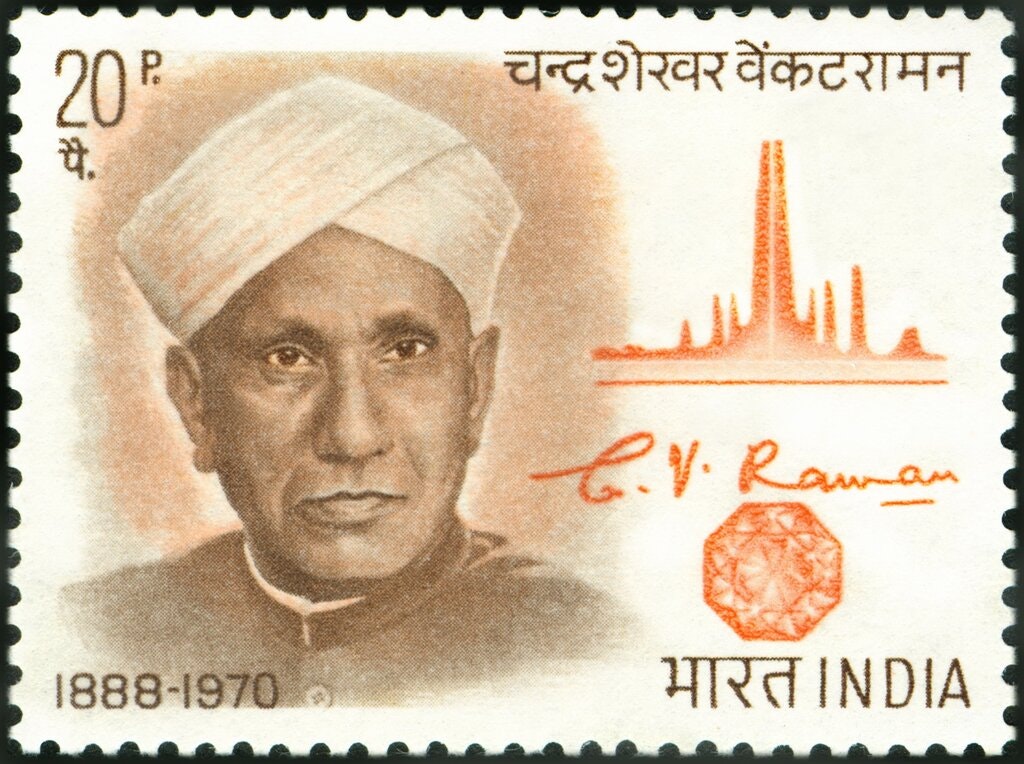
A Distinct Phenomenon in Itself: C. V. Raman’s Discovery of Why the Sea is Blue (1921)
In September 1921, a largely unknown Indian scientist was returning from his first trip overseas where he had attended an international universities congress in Oxford. He had ample time as his ship, SS Narkunda, made its way to Bombay via the Suez Canal to consider more deeply a question that had begun to concern him ever since his first voyages shuttling between Calcutta and Rangoon as a young civil servant in British-ruled India: why is the sea blue?
In 1899, the English physicist Lord Rayleigh had breezily dismissed the matter. “The much admired dark blue of the deep sea has nothing to do with the colour of water”, he wrote, “but is simply the blue of the sky seen by reflection.” However, the Indian scientist begged to differ. Staring over the steamer’s rail at “the deeper waters of the Mediterranean and Red Seas”, C. V. Raman saw, with the aid of a special prism to eliminate reflected sky light, that the blue was more intrinsic.
In a short paper, which would later appear in Nature, penned even before stepping off the Narkunda in Bombay harbour, he wrote: “It was abundantly clear from the observations that the blue colour of the deep sea is a distinct phenomenon in itself, and not merely an effect due to reflected skylight. . . . the hue of the water is of such fullness and saturation that the bluest sky in comparison with it seems a dull grey.” Rayleigh had explained the blue of the sky using a formula to describe the scattering of sunlight by molecules in the air. In this process, the light preserves its wavelength or colour, with short-wavelength blue light scattered more effectively than other colours of longer wavelength. When he had completed further experiments in Calcutta, Raman confirmed that a similar effect pertained for light encountering water molecules, with the blue light scattered most effectively and other colours quickly absorbed, leading the sea to appear saturated by blue.
Raman’s almost painterly obsession with the nature of light and colour would lead to other discoveries, and in 1930 won him the early accolade of the Nobel Prize for Physics, the first time the prize had been awarded to a non-Western scientist.
Chandrasekhara Venkata Raman was born in 1888 into a middle-class Brahmin family in Tamil Nadu. Upon obtaining his master’s degree in physics from the University of Madras, but with limited opportunity for a career in research, he joined the financial branch of the Indian Civil Service, and was posted to Calcutta. He pursued his own investigations as far as he could using basic equipment, exploring the acoustics of sound waves and musical instruments, including the Indian ektara, sitar, and tanbur, ignored by Western scientists, as well as analogous wave phenomena in light, and especially the way light is scattered as it passes through different translucent media. This work led to his appointment as professor of physics at the University of Calcutta by the age of twenty-five.
In 1927, continued studies revealed that while most light retained its original wavelength when scattered, a small fraction of it produced a feeble glow at different wavelengths. The effect was very weak, and correspondingly hard to study. However, it would turn out to have huge implications. As the Associated Press of India reported:
The principal feature observed is that when matter is excited by light of one colour, the atoms contained in it emit light of two colours, one of which is different from the exciting colour and is lower down the spectrum. The astonishing thing is that the altered colour is quite independent of the nature of the substance used. . . . There is in addition a diffuse radiation spread over a considerable range of the spectrum.
Raman conservatively attempted to describe his discovery in terms of the wave theory of light, in analogy with some of his early work on acoustics and musical instruments. In fact, a proper explanation required quantum theory, with the changes in the scattered light’s wavelength being associated with changes in the quantum energy levels of the scattering molecules. Although Raman was no fan of quantum theory, what soon came to be known as the “Raman effect” turned out to provide important evidence for the quantum nature of light.
 Scroll through the whole page to download all images before printing.
Scroll through the whole page to download all images before printing.Indian commemorative stamp, featuring the portrait of C. V. Raman and a spectroscopy diagram, ca. 1971 — Source.
Raman’s curiosity was always stimulated by looking. His descriptions from his voyage aboard the Narkunda make that clear. His analysis of the colours of the sea takes into account the brightness of the day, the weather, the exact shape of the sea waves, and his own angles of observation. He observed light and colour with an artist’s unsparing eye, and often found a scientific question to be answered, whether it was to do with the twinkling of stars or the colours that arise when a sheet of steel is strongly heated.
It was only with the invention of the laser in 1960 that the Raman effect at last made the transition from laboratory curiosity to useful tool. Using this intense source of single-wavelength light, it was now possible to record spectra of the weak scattered light. Raman spectroscopy is today used in all forms of chemical analysis. It has proved especially valuable for analysing pigments and other materials in order to determine the authenticity or otherwise of works of art because it does not require the taking of a sample from the work, and some notable forgeries have been revealed in this way.
In 1930, Raman had been so confident he would win the Nobel Prize that he booked tickets for Sweden several months before the announcement was made. He was lucky: the award might have gone to two Soviet scientists who had made the same discovery. Raman later recalled the ceremony in Stockholm:
I, the only Indian, in my turban and closed coat, it dawned on me that I was really representing my people and my country. . . . Then I turned round and saw the British Union Jack under which I had been sitting and it was then that I realized that my poor country, India, did not even have a flag of her own.
Speaking on Indian radio shortly after receiving the prize, he offered his personal definition of science as “a fusion of man’s aesthetic and intellectual functions devoted to the representation of nature. It is therefore the highest form of creative art.”





